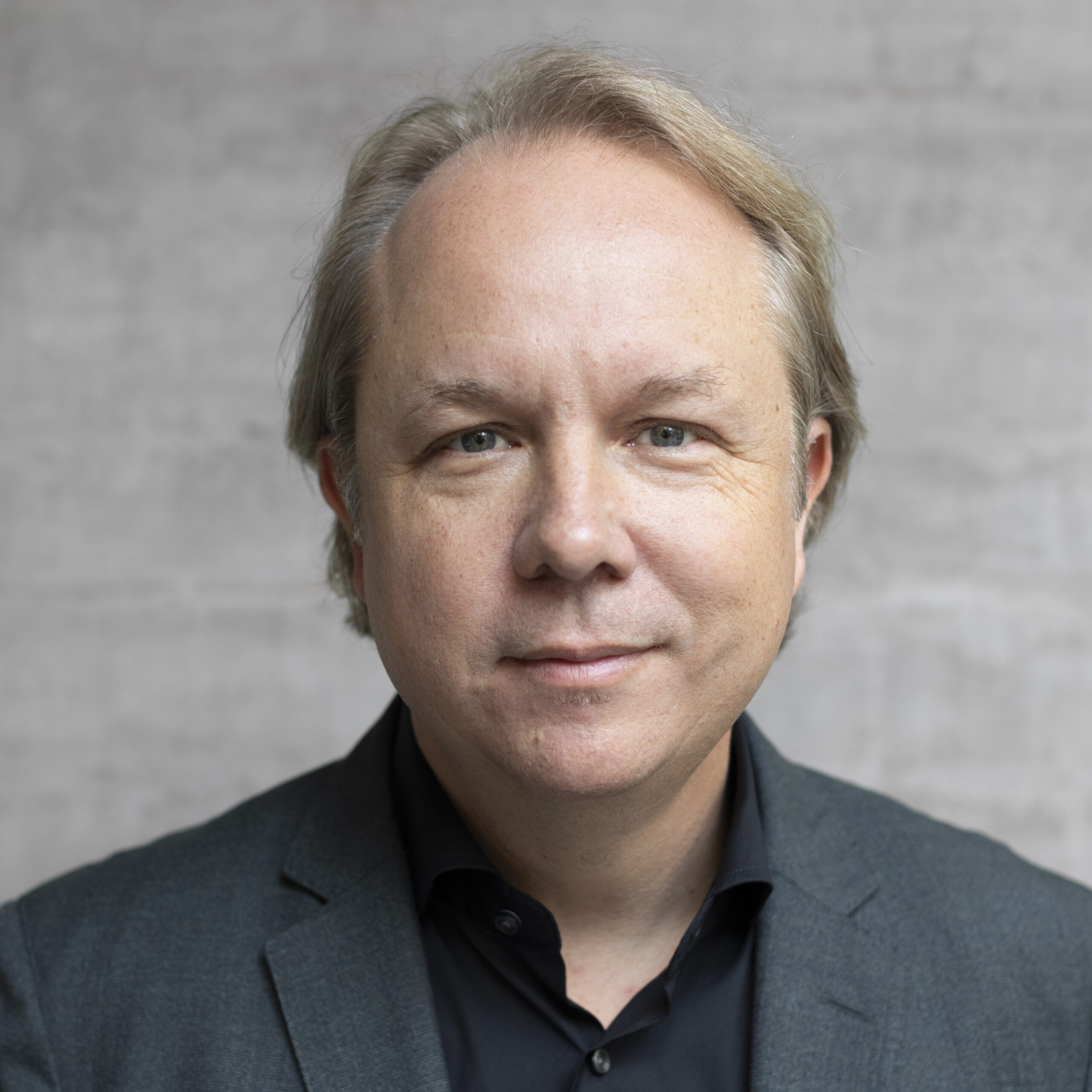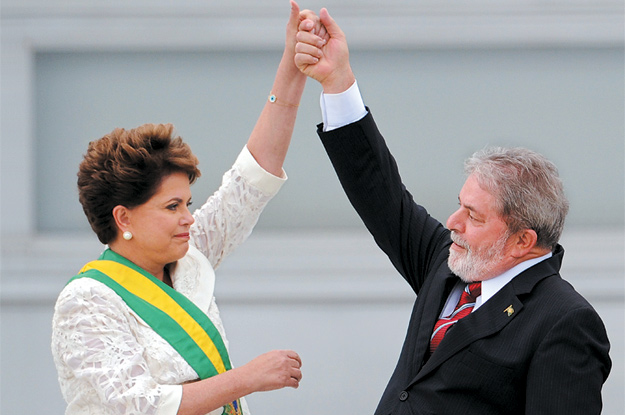This article is adapted from the Fall 2015 print edition of Americas Quarterly. To subscribe, please click here
I first met Dilma Rousseff in the hallway of a dingy hotel in Juiz de Fora in August 2010. She was in the homestretch of the presidential race and she, like Brazil, could seemingly do no wrong. The economy would grow 7.6 percent that year, and some American investors had begun referring to Brazil as “The Near China.” Rousseff, who spent her career as a competent if unremarkable technocrat, best known for her PowerPoint skills, had opened up a double-digit lead over her nearest challenger. This was her first campaign — for anything, ever.
I was lurking, accompanied by Rousseff’s nervous press aide and a fellow Reuters reporter, with only one question in mind.
After a long wait, the elevator doors opened and out came Rousseff, sweaty and red-faced following a rally in the lobby. Polite introductions were made, I pulled out my digital recorder and dove in.
“Candidata, do you believe it’s possible for Brazil to continue growing at a 7 percent pace without making reforms to taxes, labor laws and…”
“Is Brazil growing like that now?” Rousseff interrupted, frowning.
“Well, yes,” I said, “but some economists say…”
“But is it growing?” she cut me off again.
“Yes.”
“Well, then, it’s possible,” she concluded.
The message was clear: If elected, Rousseff would not be seeking major reforms for Brazil’s economy. In fact, she didn’t see the point. Sure, Brazil had by far the world’s most complicated tax code, forcing an average company to spend 2,600 hours every year just to calculate what it owed. Sure, Brazil’s labor code was more generous than most developed European nations. But the economy was growing, poverty was falling, iron ore and soy were being shipped to China in record amounts, and the World Cup and Olympics were on deck. Rousseff believed if she could just keep everything the same and not rock the boat, Brazil would continue to boom — for years or even decades to come.
“Dilma Rousseff: Brazil’s Automatic Pilot” was the title of the profile we published. No one seemed to mind; Rousseff herself liked the piece, I heard later. At one of her campaign’s final rallies, I watched from the crowd as she joined hands with her predecessor, Luiz Inacio Lula da Silva, who was about to leave the presidency with a 90 percent approval rating and his chosen successor in place. “We’re going to follow Lula’s path!” Rousseff roared. Lula grinned. The crowd went wild. It did, indeed, seem to most Brazilians like a recipe for certain success.
No longer a land of guerrillas
For most of its history, South America was known as a land of constant coups and turmoil, as the birthplace of revolutionaries like Che Guevara and Augusto Pinochet. During long stretches of the 20th century, some particularly troubled countries averaged a change in government almost every year. Even today, much of the world still associates the continent with bearded guerrillas descending from the mountains, and finely mustachioed dictators leading midnight coups.
Yet over the last 15 years or so, South America quietly evolved into the Land of the Status Quo. No other region in the world has experienced such extraordinary political stability. Notably, this stability was borne not of repressive dictatorships, à la China or the pre-Arab Spring Middle East, but (for the most part) from increasingly vibrant democracies, where voters freely elected the same parties or individuals again and again and again.
Consider: With Rousseff’s reelection in 2014, Brazilians signed up for a stunning 16 consecutive years of Workers’ Party rule. Argentina has been run by the Kirchners since 2003, a longer reign than the Peróns ever had. Ecuador, where revolts ousted two presidents in the previous decade, is now in its ninth straight year of Rafael Correa. Bolivia, with a similarly turbulent history, recently elected Evo Morales to an unprecedented third term. Chile chose a former president to return to office in 2013; Uruguay did the same in 2014. Colombia is more complicated, due to the rift between Álvaro Uribe and Juan Manuel Santos, but one could say Colombians voted for continuity three presidential elections in a row, even if that’s not what they always got. Venezuela is an outlier in terms of its democratic freedoms, but the outcome has been the same — nonstop chavismo since 1997, outliving even its founder.
Like any trend, this one has its exceptions — namely Peru. And it doesn’t really hold true in other areas of Latin America, such as Mexico or the Caribbean, because the stability was fed by factors unique to South America.
The first and most obvious factor was soaring demand from China for iron ore, copper and other commodities that South America produces. But the importance of this is probably overstated; in Brazil, for example, exports account for just 10 percent of gross domestic product. Indeed, just as critical was the adoption by most South American governments of responsible fiscal management and other policies that gave many consumers access to credit for the first time. Finally, the fruits of this bonanza were directed to an unprecedented extent to the continent’s poorest citizens, thanks to a new generation of pragmatic leftists who paired pro-business policies with creative and necessary social programs such as Bolsa Familia in Brazil and the Universal Child Allowance in Argentina. Inequality fell, and growth soared.
The resulting stability was, without a doubt, an accomplishment to be celebrated. Some 60 million South Americans rose out of poverty during the 2000s, and the middle class grew by nearly 50 percent. Big businesses prospered too, as they could finally plan for the future, and invest without worrying about pitchfork-wielding masses scaling the palace walls every few years.
But the continuity also had its dark side. Some presidents came to believe they had almost magical powers to make their economies grow. They began to forget the lessons of past crises, loosening fiscal rigor. They abandoned efforts at market-friendly reform. Voters, meanwhile, became extremely conservative — not in the right-wing U.S. sense, but in their unwillingness to elect new leaders or parties, for fear of endangering their newfound prosperity. Incumbents, sensing this, seized the chance to perpetuate their time in power or hand-pick their own successors, who weren’t always equal to the task. At some point, “stability” became “stagnancy.”
And now — well, many are paying the price. As Rousseff and some other presidents around the region can testify, the Era of the Status Quo is coming to a noisy and difficult end.
Moving beyond nostalgia, to a new era of growth
When I talk to former officials who served in Rousseff’s first term and ask them what went wrong, nearly all of them use the same word: “arrogance.” The president, and many around her, became convinced the salad days would last forever, and made decisions accordingly. “We stopped listening,” one former minister told me. “We thought we had all the answers.” Talk to people in other countries where once high-flying presidents are now struggling with sagging popularity and struggling economies, from Ecuador to Colombia to Chile, and you’ll hear similar sentiments.
The path out of this morass is straightforward enough. Indeed, the reason I asked Rousseff about reforms on that night in 2010 was that business leaders had already been clamoring for them for years. Even then, at the peak of the boom, entrepreneurs warned that growth could not continue without structural changes. Brazil was ranked 129th out of 183 countries in the World Bank’s global ranking of business climates, largely because of its tax and labor laws. Change this, they warned, or our low productivity and high costs will eventually catch up with us.
Back then, Rousseff didn’t even want to hear the question. Now, the need for such changes is abundantly clear – not just in Brazil, but elsewhere. Austerity alone won’t solve South America’s problems. Neither will a simple change in leaders or political parties. What’s needed is a new wave of pro-business reforms that can unlock a new era of investment and economic growth. In most countries, the agenda is no mystery; these proposals have been on the table for years. Rather, it’s a question of moving beyond nostalgia for the Era of the Status Quo and summoning the leadership necessary to step forward into another period of prosperity.
Letting people finish their questions is a good idea, too. You never know what you might hear.
—
Winter is the editor-in-chief for Americas Quarterly. He spent a decade living in Latin America as a reporter, and was based in Brazil from 2010 to 2015





